Hold on to your hats, folks! I haven’t been this excited about a writing idea since . . . I don’t know when??!! This one SIMPLE addition to your writing instruction will ignite a passion in your students unlike any other. It sounds too good to be true. I know . . . I know. I had my doubts too. However, after introducing this easy idea in multiple classrooms throughout Northern California, the verdict is official. Students in grades 2- 5 are ALL IN when it comes to these new writing response activities.
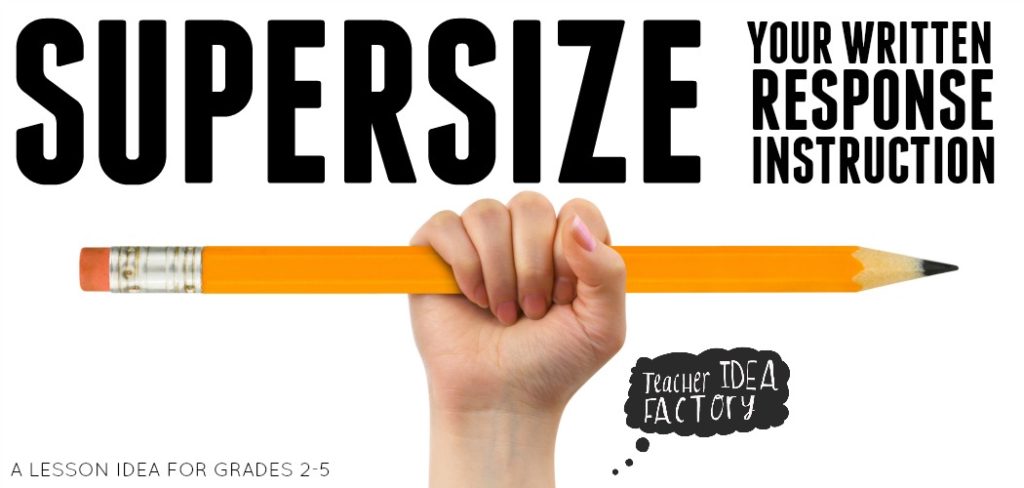
Let me back up for a moment. At the end of last year, I began looking at writing a bit differently. After sitting in on a handful of writing planning meetings with some upper elementary folks, I was shocked to learn what is expected out of our students outside of the primary grades. I always knew things were difficult, but what’s actually being dished out is beyond challenging . . . especially what is being thrown at our kids on various state assessments. Students don’t just sit and write on a topic any more. Nope. Not only are kids now asked to cross reference MULTIPLE high-level sources and develop thoughtful multi-paragraph essays, but they are also often required to listen and respond to an AUDIO CLIP without printed support. Um . . . hello hard . . . especially for us non-auditory folks. With this in mind, I started thinking about new ways to prepare our students for this new way of assessing. That’s when the idea of LISTEN AND WRITE came to me. Why not develop a series of response activities that prepares students for this new kind of testing?
How does this idea work? Instead of providing the topic or passage in written form, toss it out in an oral form. In my mind, if we can train our students to be good listeners by dispensing structured and consistent practice, we will surely see growth when it comes to assessment time. After all . . . practice really does make perfect.
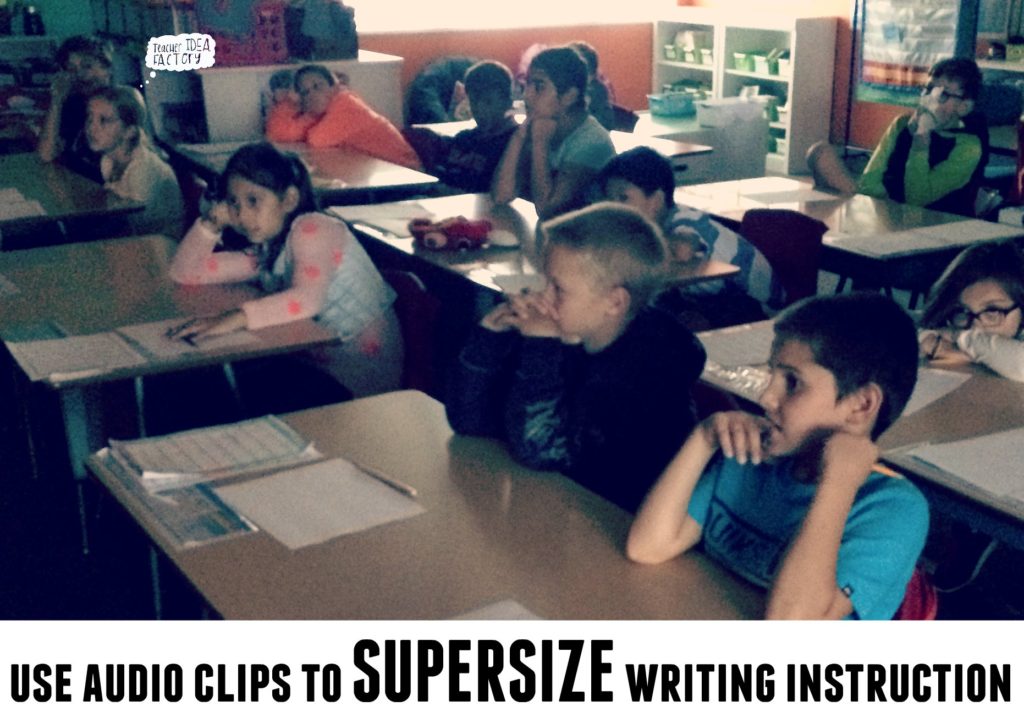
You can target oodles of different standards with oral passages and prompts (fiction, non-fiction, paired passages, etc.). The possibilities are endless. However, I believe there is a systematic approach to achieving optimal results from this idea. Hear me out for a moment.
As we come charging out of the gate, targeting fiction FIRST makes the most sense. Why fiction, you ask? My strategy is to ease students into the listening process in an entertaining way. Once students learn to focus their attention, jot a few notes, and draft a stellar response after listening to a short track, we can up the ante with those heavier non-fiction passages, paired texts, and other read/respond type activities that are more similar to the types of tasks they will face on those end of the year assessments from the state. Up front, it’s all about ENGAGING students as we directly teach the listening and responding process. In my mind, if we toss out super kid-friendly tasks, leading our crew to the “water” is dang near a snap. Once trained in the art of listening, finding the “water” during those more difficult and less engaging listening situations will be a much easier transition.
In my first attempt at packaging this idea for students, I wrote seven kid-friendly fictional tales that got well under way, but were left unfinished. Think old time radio show cliffhangers 🙂 However, I didn’t stop there. I teamed up with Ron Brown’s Intelli-Tunes to add a bit more spice to it. Remember how I said it has to be ENGAGING right off the bat to optimize training? Well, Ron helped me create a series of professionally-recorded audio files. Each story starter is set to a quiet musical background and injected with oodles of related sound effects. I put snippets of a handful of stories we came up with below. Take a little listen and let your imaginations run wild . . .
I couldn’t just come out with an idea like this and make such bold statements without testing it in a handful of different classrooms. Therefore, I begged a few upper elementary pals to give me a pocket of time with their students. So far I have been in a 2nd, 3rd, 3-4 combo, and two 5th grade classes. And, guess what? My line of thinking was right on target. These fictional story starters proved to be one of the most engaging and exciting writing-based lessons I have ever delivered. Three of the test groups even went down in the afternoon hours (((GULP))). We’re talking like 2 pm, people!!! But, this late time paired with the inevitable post-lunch coma didn’t effect a thing as I had each crew eating out of the palm of my hand. After listening to the story starter and taking a moment to brainstorm a few ideas, they were off and running. They wrote their hearts out . . . pages and pages . . . and I was actually booed in a 5th grade class when I had to call time. That’s the one whiney response I’ll let slide 😉 Oh, and I am batting 1,000 when it comes to kids gettin’ down to business. Not one child has uttered, “I don’t know what to write?!?” I know it will eventually happen, but even the few that may rear up won’t pull my average down all that much. The only complaint I had is that they wanted an ending. Two kids just couldn’t understand that there was no conclusion . . . they wanted to know what happened. It was pretty cute. After they make it through five or six fictional responses, I will return with non-fiction MP3s in hand. With a tad more practice, I know they will be ready to up their listening response game.
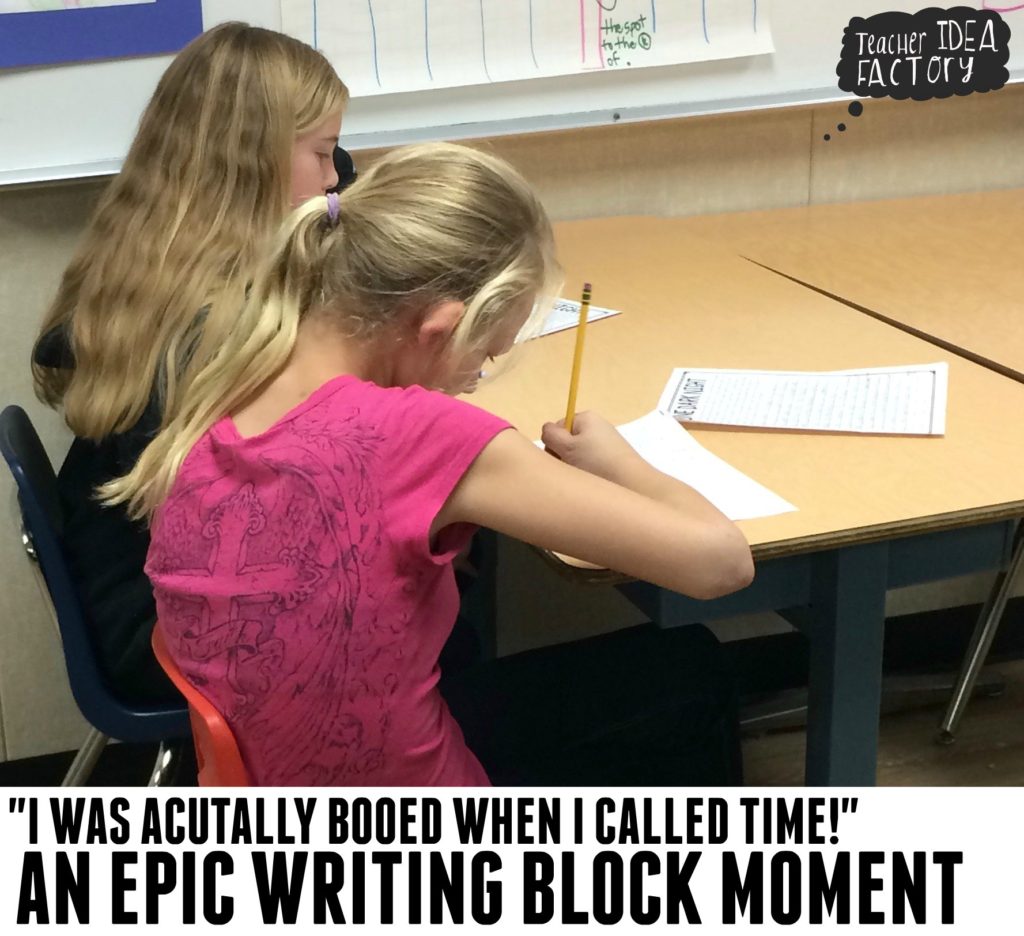
So what do you think about them ideas? Are you ready to give it a go with your crew? Well, any passage can be read orally by you! It’s not all that difficult to stand and deliver . . . hahaha . . . we do it all day. If you want a bit more engagement, play a related instrumental in the background as you read. Or, try recording the starter. You can read it or snag someone in your family to do it for you. You also can find a story online and pause it half way through. YouTube has lots of choices (just don’t project the video) or you can try Epic.
It doesn’t matter which way you roll. All you have to do is read or play a story starter to your students and ask them to finish the tale. The PROVEN method is as follows . . .
- Students listen to the story starter (play an audio track or you read one orally).
- Brainstorm ideas as a whole class. I suggest using a mind map on the board. You may or may not wish to have your students complete one with you. Whole class discussion prior to writing transforms the process and can add a whole new level of excitement to the task.

- Pass out a writing template or lined sheet of paper. During your first few attempts at this, I suggest that you provide the story introduction in written form as an additional support. This can be added to the top of the template or projected on your TV or screen during the writing process. After a few rounds this way, remove this extra aid and have you kids rely solely on their listening and/or note taking skills.
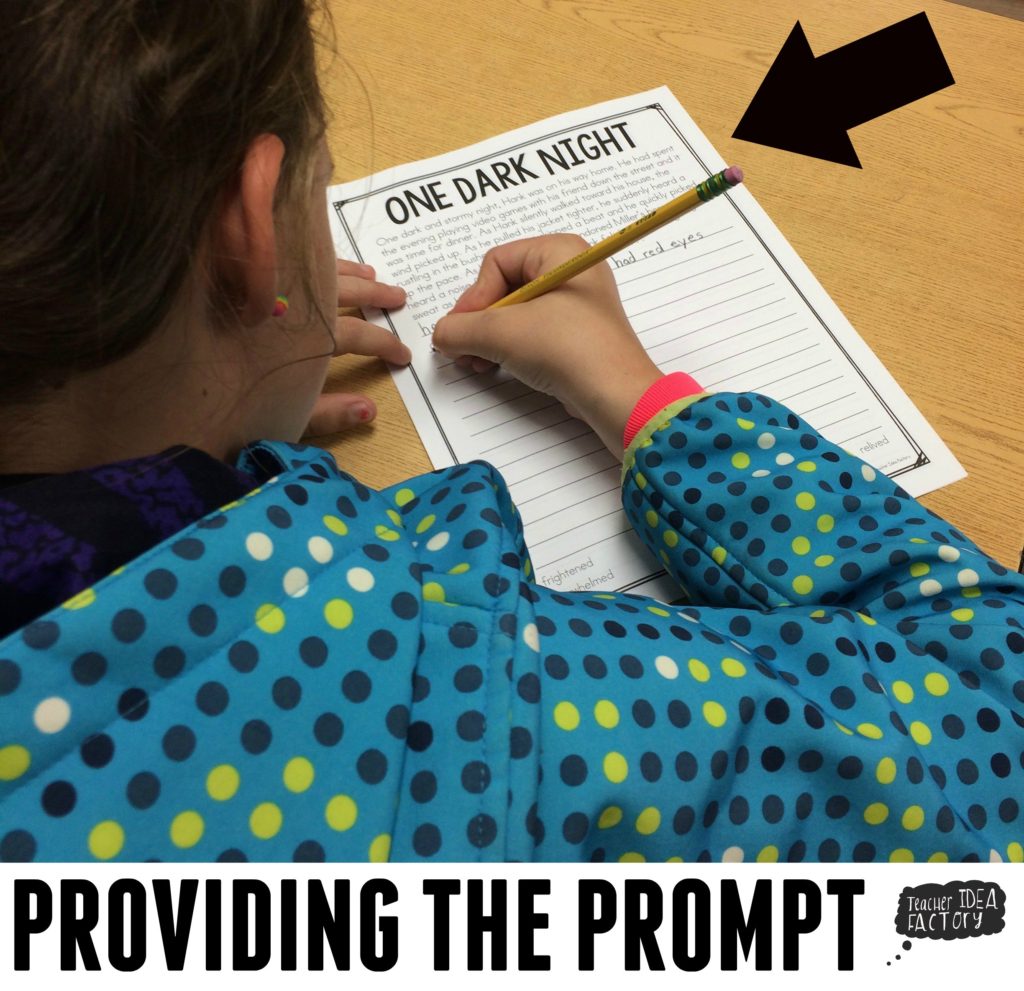
- After you’ve discussed the ways in which the story can lead, repeat the story starter audio file (or orally) so it is fresh in your students’ minds.
- As soon as you finish reading, allow your students to begin writing. I strongly suggest that you tell them NOT to worry about spelling and writing mechanics at this time. It bogs down the process and can hinder creativity. You can host a peer edit session later to fix any errors.
- Setting the “mood” while writing is optional, but it adds a little extra spice. Dim the lights or bring in special lighting. Project images on your TV or screen that relate to the topic. You can just Google your overall story theme and click images or you may choose to create a quick collage on PowerPoint. Find related instrumentals quietly in the background as they write. These easy additions add to the overall excitement of the activity and the kids absolutely eat it up!
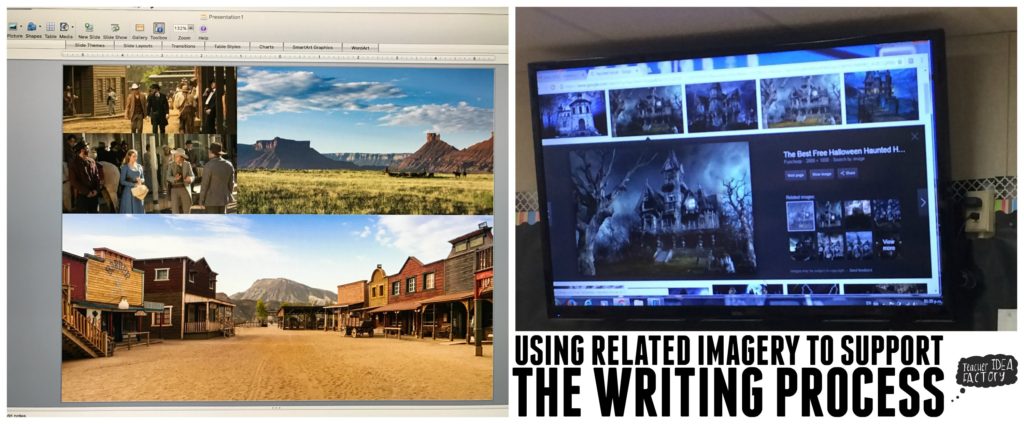
- When time is called, be sure you provide students with the opportunity to share their responses. And, boy . . . will they want to share. This can be done whole class, partner-style, in groups . . . just about any way you can think to group your crew 🙂
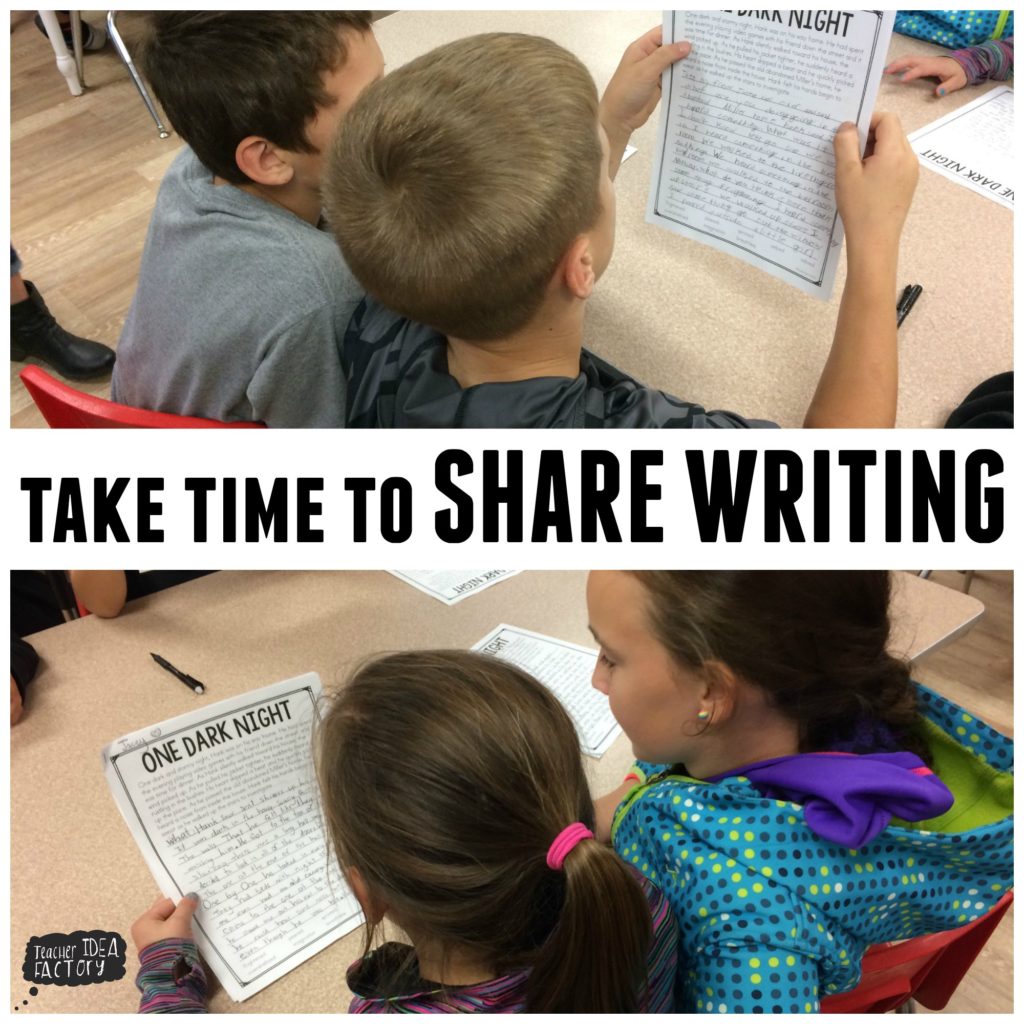
Don’t want to try to go it on your own and spend the time hunting down material? Use my highly-engaging Listen & Write collection. It’s classroom tested and student approved. My packet was created with 2nd – 5th graders in mind and it offers oodles of options. We didn’t just offer up the professionally-recorded audio files and call it a day. Oh, no! This collection also includes suggested introductions for each story, vocabulary support, optional story planners, multiple writing templates, and oodles of extension ideas. From simple quick writes to structured narrative writing instruction, this packet offers up dozens of options that allow you to utilize the audio clips in different and ways. CLICK HERE to learn more about this collection.
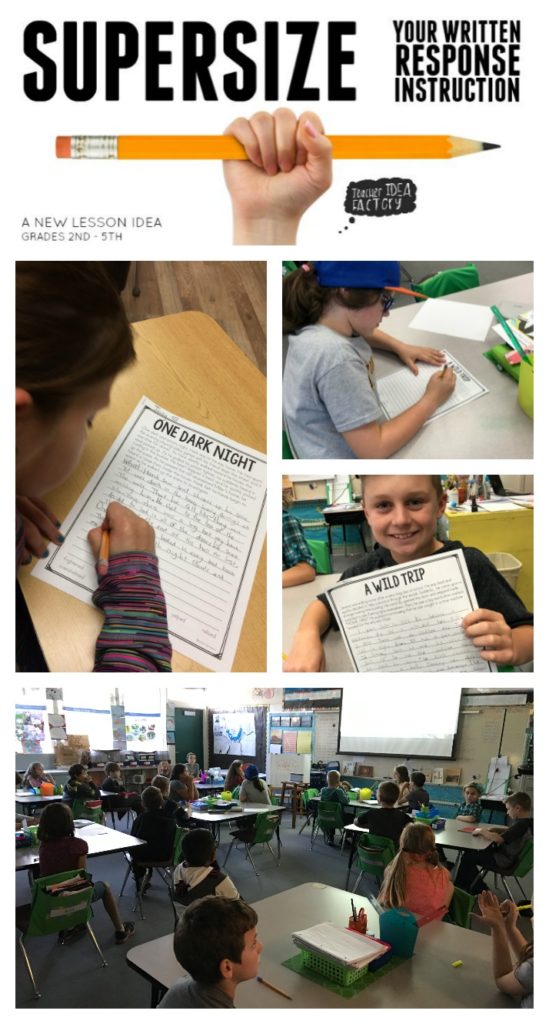
Alright, so there you have it. A revolutionary new writing idea that surely helps supersize your instruction. Thanks for taking the time to visit me today. Stay tuned for additional fiction, non-fiction, and paired passages to be released soon. The wheels are spinnin’ like mad and new collections are already well under way.
Come do a demo in my class Kelly! I’m sooo buying this!!! Amazing!
I would gladly come down. Name a day my friend!
Can you PLEASE do something for 9th graders! The “video generation” is struggling!
Email me . . . maybe I can come up with something for you. kelleydolling@gmail.com